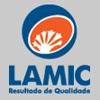Explore all the information on
Mycotoxins - Adsorbents, binders, tests
Welcome to the page about Mycotoxins - Adsorbents, binders, tests of Engormix; a source of knowledge on Mycotoxins - Adsorbents, binders, tests.
Comments related to #Mycotoxins - Adsorbents, binders, tests
Top 10 content about #Mycotoxins - Adsorbents, binders, tests































